Brass Inserts: Applications, Manufacturing Process, and Key Benefits
Brass inserts are critical components widely used in various industries for their strength, durability, and excellent performance in fastening solutions.
These inserts are designed to provide strong, wear-resistant, and reliable connections in plastic, wood, and composite materials.
From the automotive and electrical industries to plumbing and furniture manufacturing, brass inserts play a significant role in ensuring product stability and longevity.
This article will explore what brass inserts are, their types, manufacturing processes, benefits, and applications.
What Are Brass Inserts?
Brass inserts are small components made from brass (an alloy of copper and zinc) that are used to create strong threads in softer materials like plastics, wood, and composites.
These inserts allow screws and bolts to attach firmly without damaging or stripping the base material.
Brass inserts are often preferred because of their corrosion resistance, excellent machinability, and thermal conductivity, making them suitable for high-stress and high-precision applications.
Types of Brass Inserts
Threaded Inserts
- Provide durable, reusable threads for screws in plastic or wood.
- Commonly used in injection-molded components.
Knurled Inserts
- Have external knurling (diamond or straight patterns) to ensure a strong grip when embedded in materials.
- Types include straight knurled, diamond knurled, and helical knurled inserts.
Press-In Inserts
- Designed to be pressed into place in materials like wood or soft plastics.
- Offer a secure fit without requiring additional tools or adhesives.
Ultrasonic Inserts
- Embedded into plastics using heat and ultrasonic vibrations to create a solid bond.
- Used in precision molding applications.
Self-Tapping Inserts
- Feature threads that cut into the base material during installation.
- Useful in applications where pre-drilling is not possible.
Expansion Inserts
- Expand when a screw is tightened, locking the insert into place.
- Ideal for high-vibration environments.

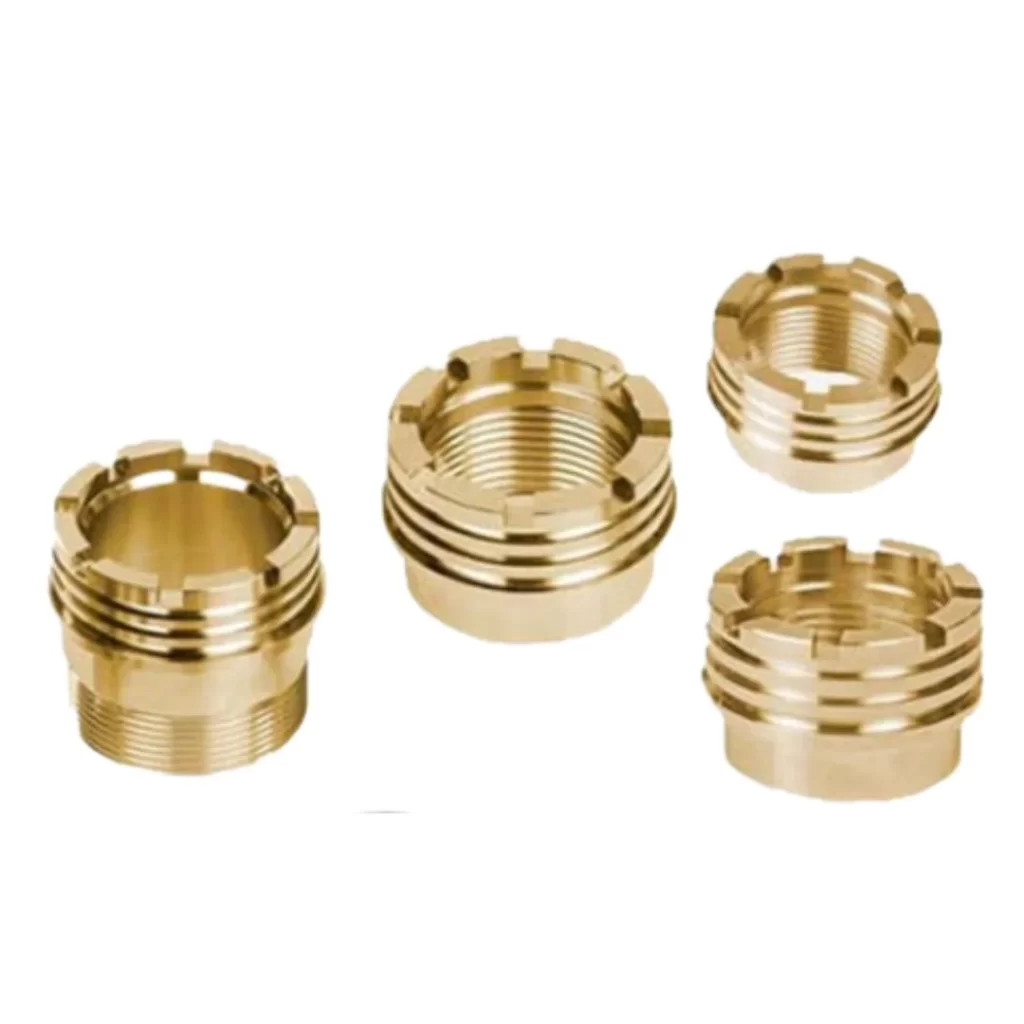
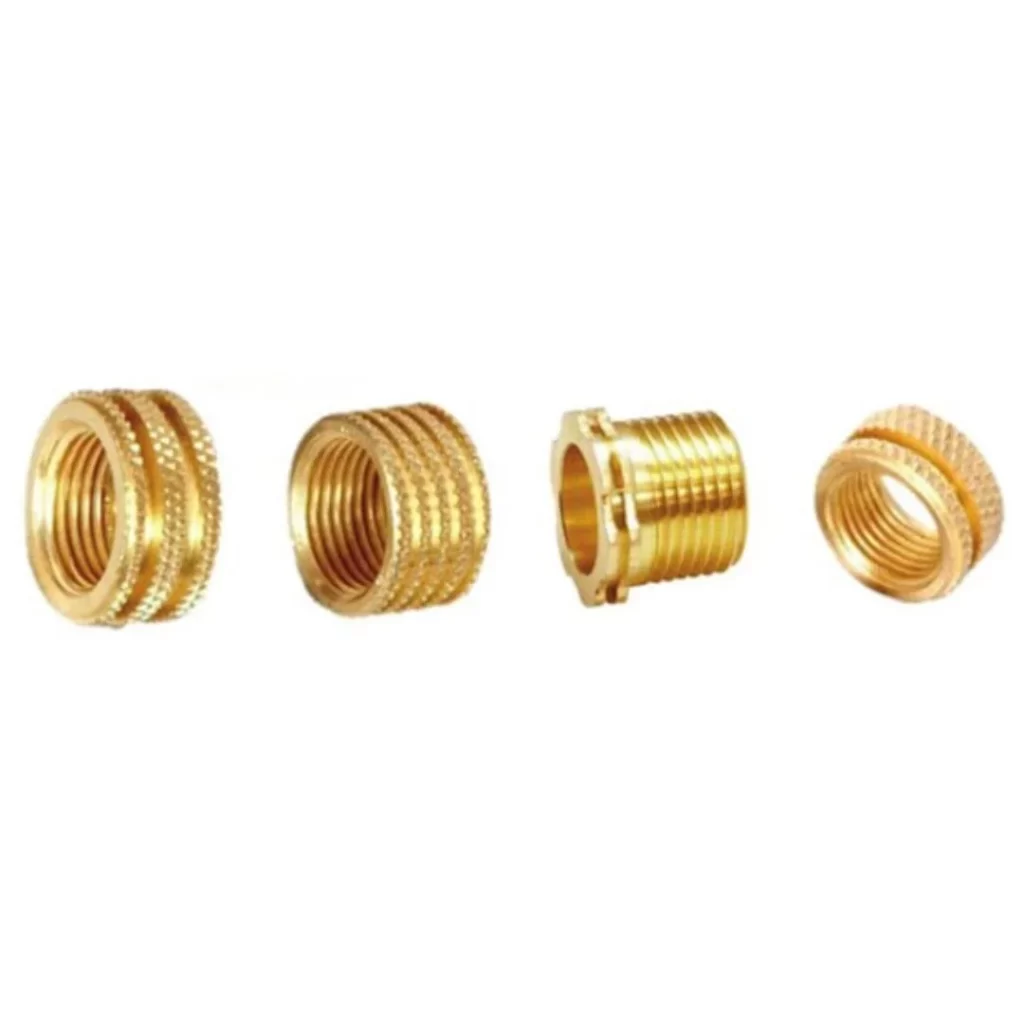
Manufacturing Process of Brass Inserts
The production of brass inserts requires advanced techniques to achieve high precision, durability, and performance. Here are the key steps involved:
Material Selection
- High-quality brass rods or billets are chosen based on the required specifications and industry standards.
CNC Machining
- Computer Numerical Control (CNC) machines are used to shape the inserts into precise sizes and designs.
- Threads, knurling, and other features are created during this process.
Knurling and Threading
- Knurling patterns are added to the inserts to ensure a firm grip within the base material.
- Internal or external threads are machined based on the application requirements.
Finishing
- Brass inserts are polished or plated with coatings like nickel, chrome, or zinc to enhance their durability and resistance to corrosion.
Quality Control
- The finished inserts are tested for dimensional accuracy, thread quality, and mechanical strength to ensure they meet strict industry standards.
Benefits of Brass Inserts
Corrosion Resistance
- Brass does not rust or corrode easily, making it ideal for humid and harsh environments.
Excellent Machinability
- Brass is easy to machine, allowing for precision designs and intricate threads.
Strong and Durable
- Brass inserts provide high strength and wear resistance, ensuring long-term performance.
Thermal and Electrical Conductivity
- Brass’s superior conductivity makes it suitable for electrical and heat-resistant applications.
Versatility
- Available in various designs, including threaded, knurled, and self-tapping, for use in multiple industries.
Environmentally Friendly
- Brass is fully recyclable, making it a sustainable choice for manufacturers.
Secure and Reusable Connections
- Brass inserts allow for repeated fastening without damaging the base material.
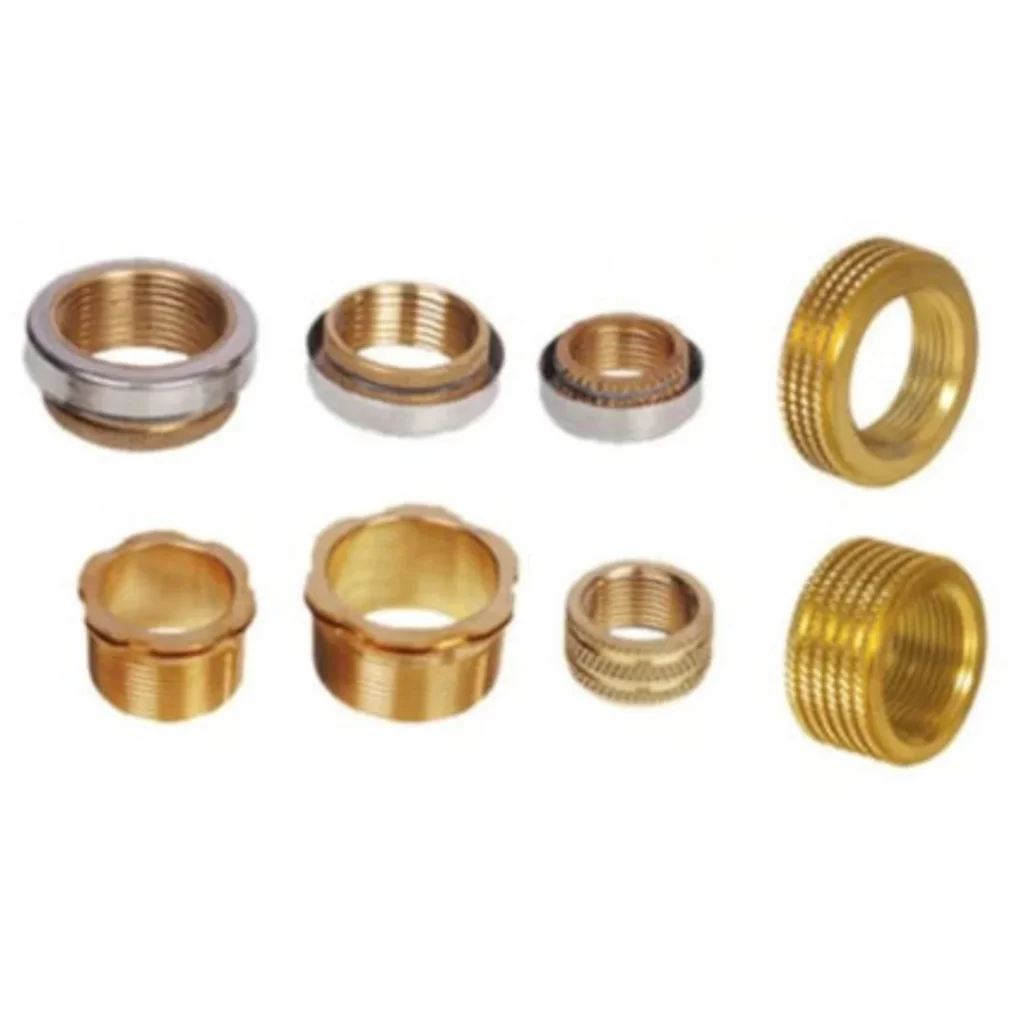
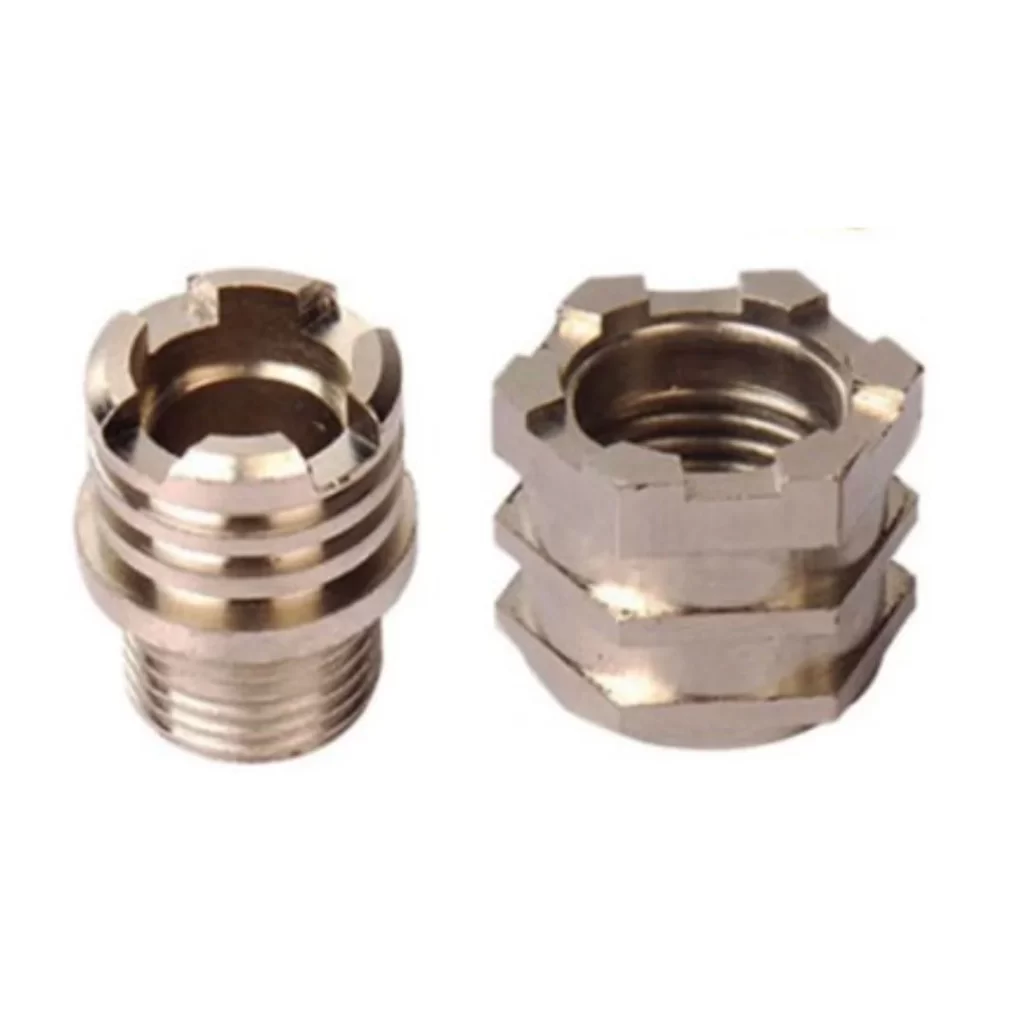
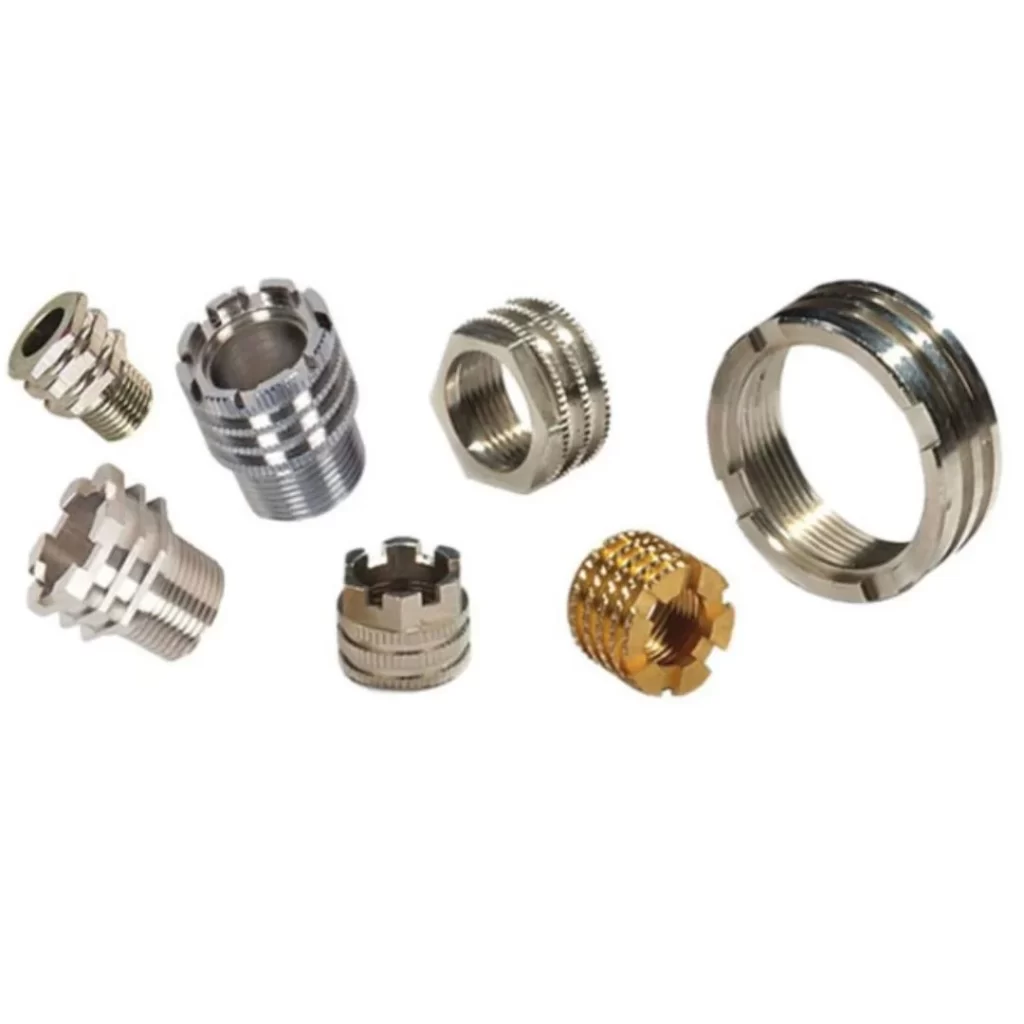
Applications of Brass Inserts
Brass inserts are versatile components used in various industries, including:
Automotive Industry
- Used in automotive components to create secure, wear-resistant threads in plastic parts.
Electrical Industry
- Found in connectors, switches, and other components requiring strong threads and conductivity.
Plumbing and Piping
- Provide durable connections in pipes, fittings, and fixtures.
Furniture Manufacturing
- Embedded in wooden furniture to allow repeated screw fastening without damaging the wood.
Plastic Molding Industry
- Used in injection-molded plastic parts for strong, threaded connections.
Electronics
- Installed in circuit boards and electronic devices for stable and conductive connections.
Medical Equipment
- Provide reliable and precise fastening in medical devices and tools.
Why Brass Inserts Are Better Than Alternatives
Compared to inserts made from other materials like steel or aluminum, brass inserts offer several advantages:
- Better Corrosion Resistance: Brass outperforms steel in humid or corrosive environments.
- Superior Machinability: Allows intricate and precise designs without compromising strength.
- Aesthetic Finish: Brass has a visually appealing golden finish, which is important for visible components.
- Cost-Effectiveness: While durable, brass is more affordable compared to alternatives like stainless steel.
Conclusion
Brass inserts are essential components that offer durability, reliability, and precision across a wide range of applications.
Their ability to provide strong, reusable threads in softer materials like plastic, wood, and composites makes them invaluable in industries such as automotive, electronics, plumbing, and furniture manufacturing.
With their corrosion resistance, excellent machinability, and cost-effectiveness, brass inserts are a preferred choice for manufacturers looking for long-lasting fastening solutions.
By understanding their benefits, types, and applications, industries can leverage brass inserts to enhance product performance and ensure superior quality.